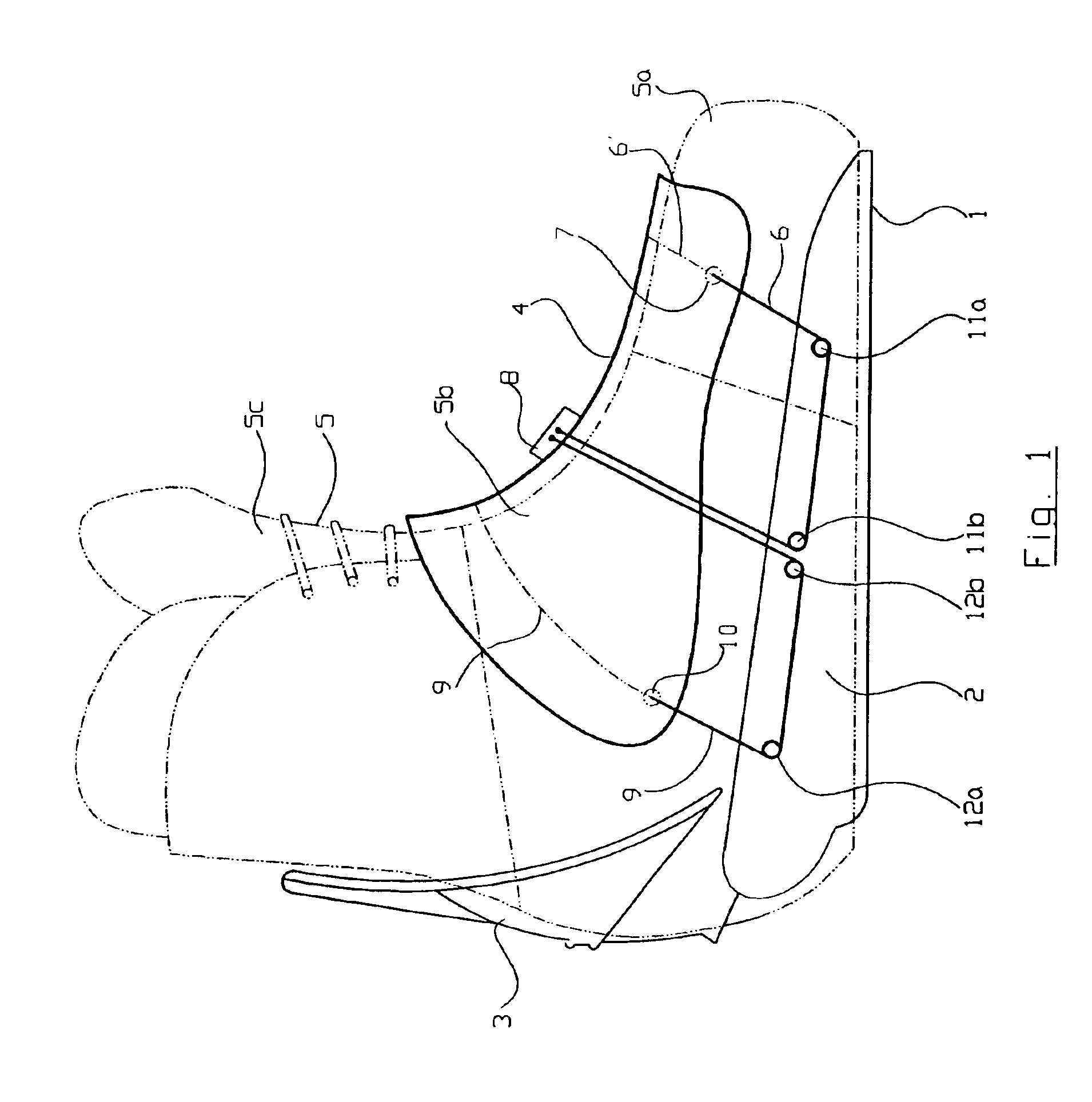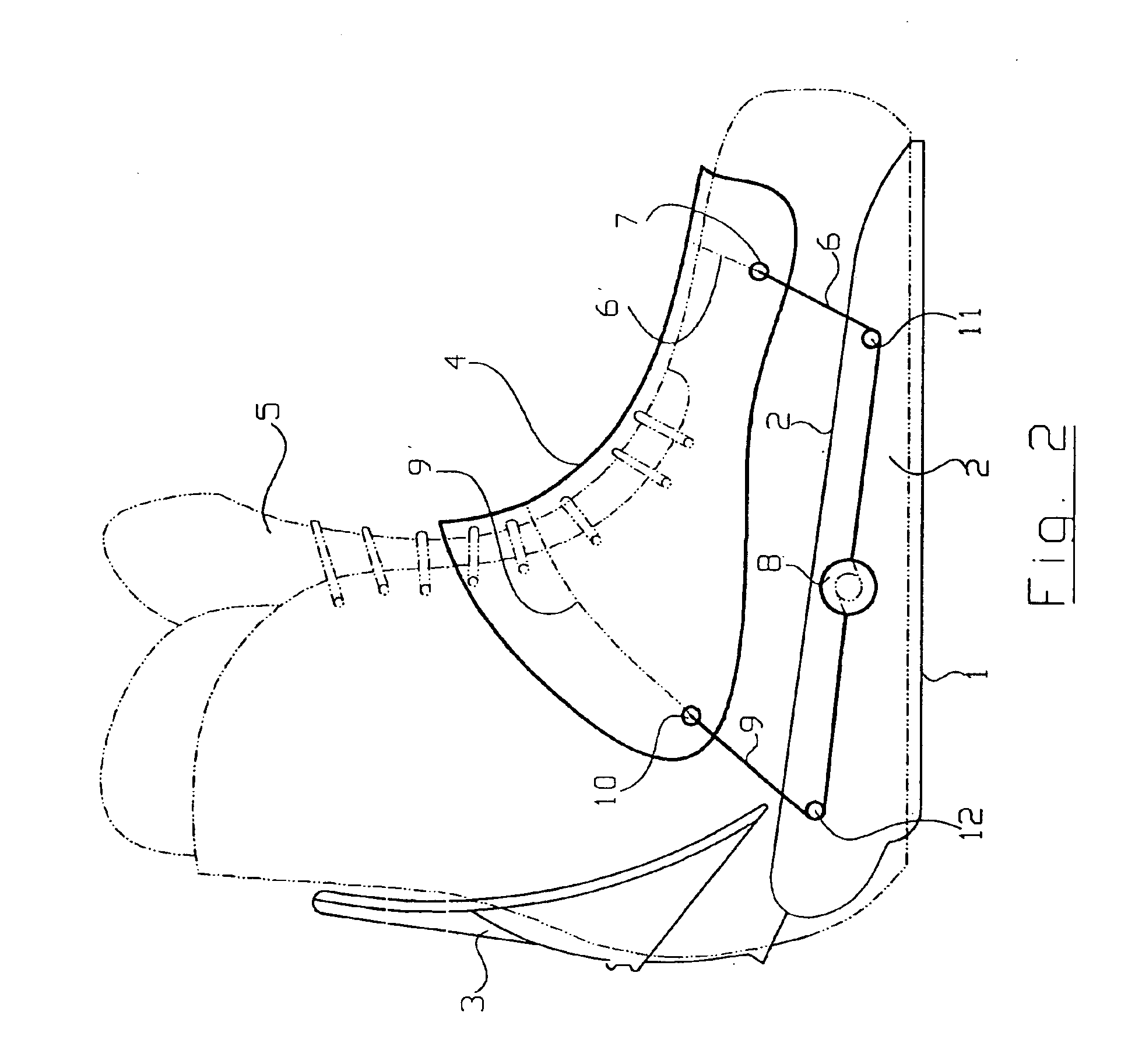Snowboard binding
a technology for snowboards and straps, applied in the field of snowboard bindings, can solve the problems of cumbersome inability to accurately perform, and difficulty in achieving, and achieve the effect of improving the snowboard binding, simple and accurate adjustment of effective length of instep straps
- Summary
- Abstract
- Description
- Claims
- Application Information
AI Technical Summary
Benefits of technology
Problems solved by technology
Method used
Image
Examples
Embodiment Construction
[0018]At first, reference will be made to FIG. 1. A snowboard binding has a support structure with a base plate 1, which is attached in a known way to the surface of a snowboard (not shown). This is typically done with screws. Side plates 2, which extend perpendicularly from the base plate 1 and are attached to the actual base plate 1 on both sides of a boot 5, are integral components of the support structure. The side plates 2 have several functions, among other things, lateral guidance of the boot, pivotally holding a heel part 3, and holding a single instep strap 4 that extends from a front toe region 5a of the boot 5 to an instep region 5b and partially crosses over into an upper shoe region 5c. Although not only the instep but also the toe region and possibly also an upper shoe part are covered, here it is called an instep strap. This instep strap 4 is attached to at least one side plate 2 by tension cables 6 and 9. While numerous embodiments are possible four are described in ...
PUM
 Login to View More
Login to View More Abstract
Description
Claims
Application Information
 Login to View More
Login to View More - R&D
- Intellectual Property
- Life Sciences
- Materials
- Tech Scout
- Unparalleled Data Quality
- Higher Quality Content
- 60% Fewer Hallucinations
Browse by: Latest US Patents, China's latest patents, Technical Efficacy Thesaurus, Application Domain, Technology Topic, Popular Technical Reports.
© 2025 PatSnap. All rights reserved.Legal|Privacy policy|Modern Slavery Act Transparency Statement|Sitemap|About US| Contact US: help@patsnap.com



